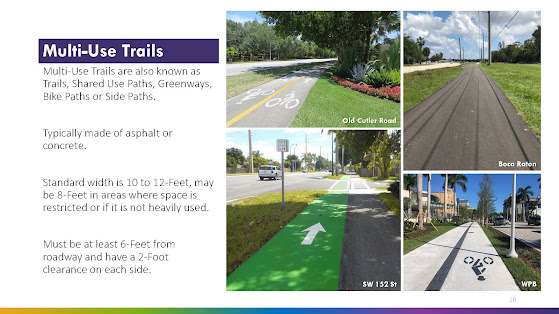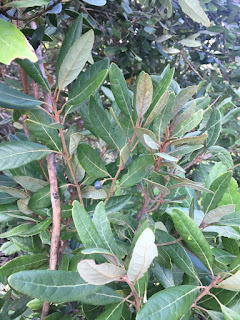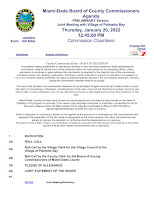Is the environmental spirit dead with current elected officials? Why are they willing to spend hundreds of thousands of dollars in the future to "beautify" the median running within US1 (costs that they gladly assumed from FDOT), but not protect environmentally sensitive land?
I rely upon experts. The 22 acres of the Palmetto Bay Village Center should be saved. Please see this guest post from 10/18/2018: What’s so special about a 22 acre forest on Old Cutler Rd?
What’s So Special about a 22 Acre Forest on Old Cutler Road, by Eduardo Varona, Guest Post
Many have questioned over the last decade what is the importance of 22 acres of privately owned native forest on the east side of Old Cutler Rd just north of SW 184 St in Palmetto Bay. Some have claimed and said it is a protected forest. The private owner at times has wanted to develop it and at times seems to want to protect it. Politicians have even fallen on their own swords actually proposing to develop it. At times part of the forest was even looked at for a fire station to serve the surrounding neighborhoods.
In the last four years there has been a serious push to finally give steadfast lasting protections to this forest through a deal between the Village of Palmetto Bay and the private owner, the Palmetto Bay Village Center (PBVC). This agreement would involve a transfer of developmental rights from the 22 acres east to the parcels surrounding the PBVC. And Palmetto Bay would receive the 22 acre forest as the newest passive park in the “Village of Parks”.
So this begs the question, do the 22 acres of forest need protection? Is this privately owned forest currently protected from development now and in the future?The answer to the second question is a very certain NO. The 22 acres have never been designated a Natural Forest Community (NFC) by the County and therefore are not protected whatsoever under County laws. To have been designated an NFC the private owner could have approached the county and asked for an ecological and biological assessment of the site. This has never happened. Had it happened, due to the relatively well maintained condition of the forest it would most likely have been designated an NFC. However, even if it had been designated an NFC it would only have protected a percentage of it from development, not all of it.
What about a covenant that allegedly exists or existed that allegedly protects the forest. Well, depending on who you ask and on which side of the bed they woke, there is a covenant of sorts that is enforced by the Village. A covenant that the Village agrees is soon scheduled to expire.
But in actuality that covenant doesn’t protect the forest at all. It only protects the homes across from the forest along Old Cutler Rd by maintaining a “visual buffer” so that those homes can’t see the PBVC building. That is the extent of the covenant which is due to expire in 2019, if you ask the experts. Finally, is there interest by the private owner to develop the forest? Well why wouldn’t there be as it is prime real estate right on old Cutler Rd. If not protected, someday it will be developed.
Now let’s go back to the original question, the title of this writing. What’s so special about a 22 acre forest on Old Cutler Rd? This forest is very special indeed. It is one of the last remaining remnants of the tropical rockland forest ecosystem that covered Miami-Dade County before we bulldozed 98% of it. Yes there is roughly only 2% left of this forest ecosystem left in all of South Florida. Most of this ecosystem existed almost exclusively in South Miami-Dade. And day by day we lose additional acreage to development and neglect.

Specifically, the 22 acres of the PBVC is a tropical rockland forest composed of rockland hammock and pine rockland. These two forest communities exist on the oolitic limestone ground in a fluid equilibrium with each other as the land can transition back and forth between the two distinct plant communities in a natural and controlled process influenced by fire, hydrology, and by man. The species diversity both plant and animal that this 22 acre forest harbors cannot be measured in dollars. It should not ever be measured in dollars. In fact some years ago, the 22 acres was nominated for inclusion into the County's Environmentally Endangered Lands (EEL) acquisition program. County biologists assessed the site in response and documented the important habitat values. As a result, the Board of County Commissioners added this site to the list of lands that EEL should purchase for management and protection. The land has remained on the list ever since awaiting funding for purchase.
Roughly half of the 22 acre forest is pine rockland with the rest consisting of an oak hammock also containing trees such as mastic and gumbo limbo. Yet it is a little known fact that pine rockland is a worldwide endangered ecosystem and plant community which only occurs in Cuba, Bahamas, and yes, Miami-Dade County, and only in South Dade.
There is more that makes this 22 acre forest more unique than other similar parcels in South Dade. This forest is one of the last remnants of a vast coastal forest that existed in a long ecotone where the forest met the South Dade coastal wetlands and then beyond that Biscayne Bay. And there is even more that makes it so special.


Few understand that all throughout the Miami coastal ridge where now lie the municipalities of Palmetto Bay, Cutler Bay, and Pinecrest there existed transverse glades, also known as finger glades. These transverse glades, traversed the coastal ridge as creeks and fresh water wetlands that in the wet season flowed with fresh water from the Everglades all the way to Biscayne Bay. One very large transverse glade occurred in the area known as Bel Aire in Cutler bay and it ran northeast into Palmetto Bay emptying most of its fresh water into Biscayne Bay at the Deering Estate. This same transverse glade, now a canal, at one time also fed this 22 acre forest and the coastal wetlands abutting it with a seasonal seepage of subterranean ground water through the porous limestone underfoot. In fact an unusual tree species for this location so close to the coast still lives on the edge of these 22 acres at the spot where it once met the coastal wetlands. The Swamp Bay, a tree in the Avocado family, mainly occurs in the Everglades tree islands and in transverse glades. And that a specimen of this tree still grows on the edge of the 22 acre forest is evidence of the strong Everglades fresh water connection that once existed at the site.
So to come full circle, the 22 acres is significant in of itself as one of the last remnants of a vast tropical rockland coastal forest that once existed but is now mostly gone. However, the last piece of the intricate story is that this 22 acre forest lies right beside the Biscayne Bay Coastal Wetlands (BBCW) restoration project which is an integral component of the Comprehensive Everglades Restoration Plan (CERP). This large scale CERP restoration project is planned to restore many thousands of acres of coastal wetlands and the near-shore adjacent portions of Biscayne Bay. With the exception of what has already been restored at the Deering Estate, the most northerly component of this large project is the 130 acre restoration parcel purchased by the Water Management District just to the south of the 22 acre forest. This makes the forest and its protection an effort worthy of local, county, state, national, and international significance.
This precious 22 acre forest if preserved will support and enhance BBCW and the Village of Parks far into the future.
Swamp bay trees that are proof of the connection of this forest to fresh water wetlands.

























